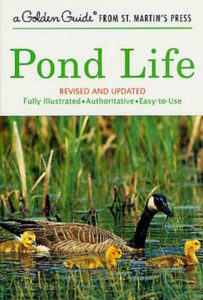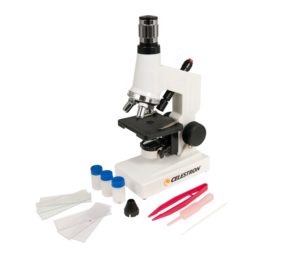Planarians. Tiny arrow-shaped free-living flatworms easily found in freshwater ponds, lakes, and streams. They were the first creatures I ever identified using a microscope. I was in the third grade at the time.
The grade school I attended had recently made a trip to Klootchy Creek, one of the popular Clatsop Country destinations for local school field excursions, and returned with a number of small containers filled with assorted small plants and aquatic creatures for use in creating classroom aquariums. As I recall, the creation of these little five-gallon windows into the underwater world was the end goal for the class.
However as luck would have it, the grade school I attended had just that year reduced its size from a kindergarten through sixth grade school to a kindergarten through fourth grade school as the result of a then new “middle school” being opened as part of a nineteen-seventies progressive restructuring that took in the fifth and sixth grade students from our grade school as well as two other grade schools in the area. As a result of this, my school ended up with a number of no longer needed classrooms – one of which was a biology lab.
I’ll save the story of what we discovered one day in the storage closet in that lab for another time; however for the purpose of this essay, what we discovered on the tables during a teacher-sent errand into this now-abandoned lab were microscopes – old-fashioned but perfectly serviceable microscopes, both compound and dissecting styles. None of the remaining teachers at the school had any use for them, so for the better part of that year they simply sat collecting dust in the usually locked lab.
 Now one of the benefits of being a good student in an upper grade back when I was a boy was that one was given more or less the run of school so long as one’s lessons were completed. For me, “run of the school” meant a substantial amount of time spent in the library. However one fateful day, the subject of a book I was reading in the library directly intersected with the disused biology lab. The book, one of the Golden Guides of which I was an ardent enthusiast, both depicted and explained the technique for examining pond water through a microscope.
Now one of the benefits of being a good student in an upper grade back when I was a boy was that one was given more or less the run of school so long as one’s lessons were completed. For me, “run of the school” meant a substantial amount of time spent in the library. However one fateful day, the subject of a book I was reading in the library directly intersected with the disused biology lab. The book, one of the Golden Guides of which I was an ardent enthusiast, both depicted and explained the technique for examining pond water through a microscope.
Thus when returning to my classroom, I asked my teacher if I could examine some of the water from our aquariums under the microscopes in the lab. This being an earlier, simpler time, she naturally agreed, telling me that if I saw anything interesting and drew a picture of it, I could turn it in for extra credit (and as a result, adding another plus to my standing “A+” in science). The only challenge was that no one at the school knew how to use the microscopes. Back to the library I went.
Needless to say, it wasn’t long before I had found the book I needed, read the section on microscope use, and was fiddling around with one of the compound microscopes in the lab. As these were old-fashioned microscopes that lacked electric lamps, the trickiest part was getting the mirror adjusted to reflect sufficient light through the aperture in the stage and illuminate the sample. However once I did and brought the image into focus, what I saw looking back at me were the two “eyes” of a curious little arrow-shaped creature: a planarian. This was discovery at its most sublime.
 Recounting this adventure to my mother and father must have planted a seed in their minds, for the next birthday I celebrated saw me unwrapping a genuine microscope that they’d found offered for sale in the Sears catalog. Complete with case, tweezers, dropper, and a dozen slides, with my new microscope I was thus fully equipped to embark upon a host of new discoveries. It was by far one of the best purchasable gifts I was given as a boy, comparable only to the set of encyclopedias my parents had purchased for me the year before. Neither of them were scientists, mind you, or even particularly successful in school during their own young years. They were working class; my father a commercial fisherman and my mother a waitress-turned-self-taught-bookkeeper. However they seemed to understand that given the tools to do so, my innate curiosity would carry me through to higher things.
Recounting this adventure to my mother and father must have planted a seed in their minds, for the next birthday I celebrated saw me unwrapping a genuine microscope that they’d found offered for sale in the Sears catalog. Complete with case, tweezers, dropper, and a dozen slides, with my new microscope I was thus fully equipped to embark upon a host of new discoveries. It was by far one of the best purchasable gifts I was given as a boy, comparable only to the set of encyclopedias my parents had purchased for me the year before. Neither of them were scientists, mind you, or even particularly successful in school during their own young years. They were working class; my father a commercial fisherman and my mother a waitress-turned-self-taught-bookkeeper. However they seemed to understand that given the tools to do so, my innate curiosity would carry me through to higher things.
I don’t know if small-town schools still have labs with microscopes, if they allow students to make their own discoveries, or if working class parents still purchase microscopes for their curious children. I hope all three of these are indeed still true, and if they aren’t, I’d like to try to do what I can to rectify that with a few essays I’m planning to write in the weeks to come that will take up the subject of microscopes, their importance to budding as well as developed naturalists, and some resources those interested in adding a microscope to their own natural history kit may find helpful.
If you enjoyed reading this, please consider signing up for The Well-read Naturalist's newsletter. You'll receive a helpful list of recently published reviews, short essays, and notes about books in your e-mail inbox once each fortnight.
